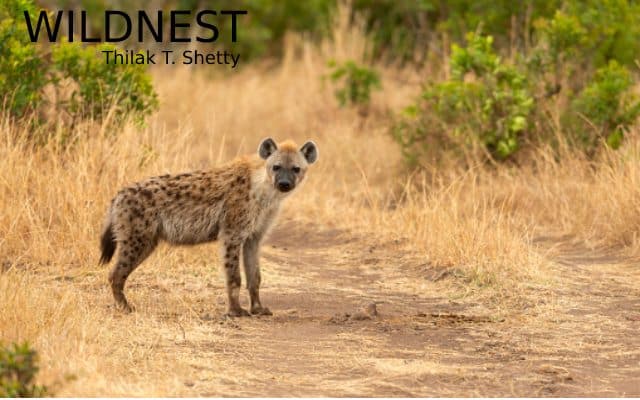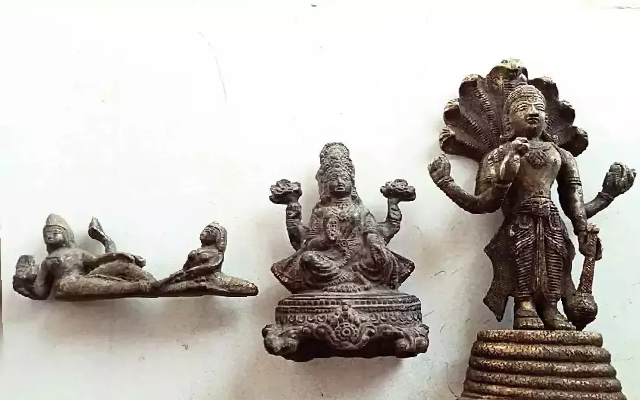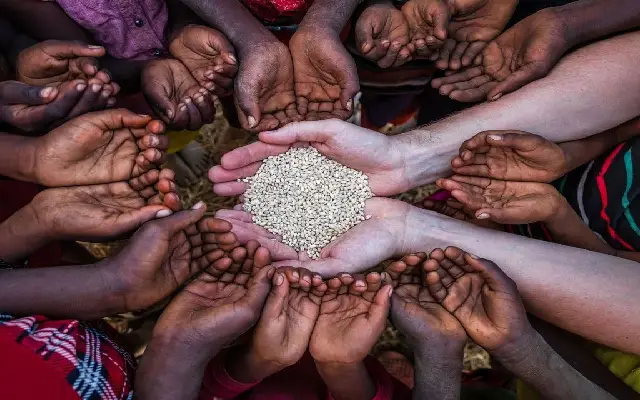Hyenas or hyaenas are carnivoran mammals of the family Hyaenidae with only two extant species found both in Asia and Africa and known for their scavenging habits. The two extant species are the striped hyena and the spotted hyena. It is the fifth-smallest family in the Carnivora and one of the smallest in the class Mammalia. Despite their low diversity, hyenas are unique and vital components of most African ecosystems.
Hyenas are non-arboreal, cursorial hunters who use their teeth rather than their claws to catch their prey. They eat food quickly and may store it and their calloused feet with large, blunt, non-retractable claws are adapted for running and making sharp turns. Hyenas have relatively short torsos and are fairly massive and wolf-like in build, but have lower hind quarters, high withers and their backs slope noticeably downward towards their rumps. The forelegs are high, while the hind legs are very short and their necks are thick and short. Their skulls superficially resemble those of large canids, but are much larger and heavier, with shorter facial portions. Their ears are large and have simple basal ridges and no marginal burs. Hyenas are tireless trotters with excellent sight, hearing and smell for locating carrion, and they are proficient hunters as well.
Spotted hyenas range south of the Sahara except in rainforests. They are ginger-coloured with patterns of dark spots unique to each individual and females are larger than males. Weighing up to 82 kg (180 pounds), they can measure almost 2 metres (6.6 feet) long and about 1 metre tall at the shoulder. Spotted hyenas communicate using moans, yells, giggles and whoops, and these sounds may carry several kilometres.
The spotted hyena hunts everything from young hippos to fish, though antelopes are more common. In East and Southern Africa, they kill most of their food, chasing wildebeest, gazelles, and zebras. Strong jaws and broad molars allow the animal to get at every part of a carcass and crush bones, which are digested in the stomach by highly concentrated hydrochloric acid. Spotted hyenas sometimes go several days between meals, as the stomach can hold 14.5 kg of meat.
Mating between hyenas involves several short copulations with brief intervals. Gestation is about 110 days, and annual litter size is usually two cubs, born in any month. Spotted hyena cubs are born almost fully developed, with their eyes open and erupting incisors and canines, though lacking adult markings. In contrast, striped hyena cubs are born with adult markings, closed eyes and small ears. Hyenas do not regurgitate food for their young and male spotted hyenas play no part in raising their cubs, though male striped hyenas do so. For 6 months, the cubs’ only food is mother’s milk; nursing bouts may last four hours. Where prey is migratory, the mother “commutes” 30 km or more from the den and she may not see her cubs for three days. After 6 months, the cubs begin eating meat from kills, but they continue to drink milk until 14 months old.
Intelligent, curious, and opportunistic in matters of diet, hyenas frequently come into contact with humans. The spotted hyenas are the largest species and will burglarize food stores, steal livestock, occasionally kill people, and consume wastes – habits for which they are usually despised, even by the Masai, who leave out their dead for hyenas.
Hyenas feature prominently in the folklore and mythology of human cultures that live alongside them. They are commonly viewed as frightening and worthy of contempt. In some cultures, hyenas are thought to influence people’s spirits, rob graves and steal livestock and children. Other cultures associate them with witchcraft. Hyenas are used for food and medicinal purposes in Somalia although they are considered haram in Islam. This practice dates back to the times of the Ancient Greeks and Romans, who believed that different parts of the hyena’s body were effective means to ward off evil and to ensure love and fertility.

















